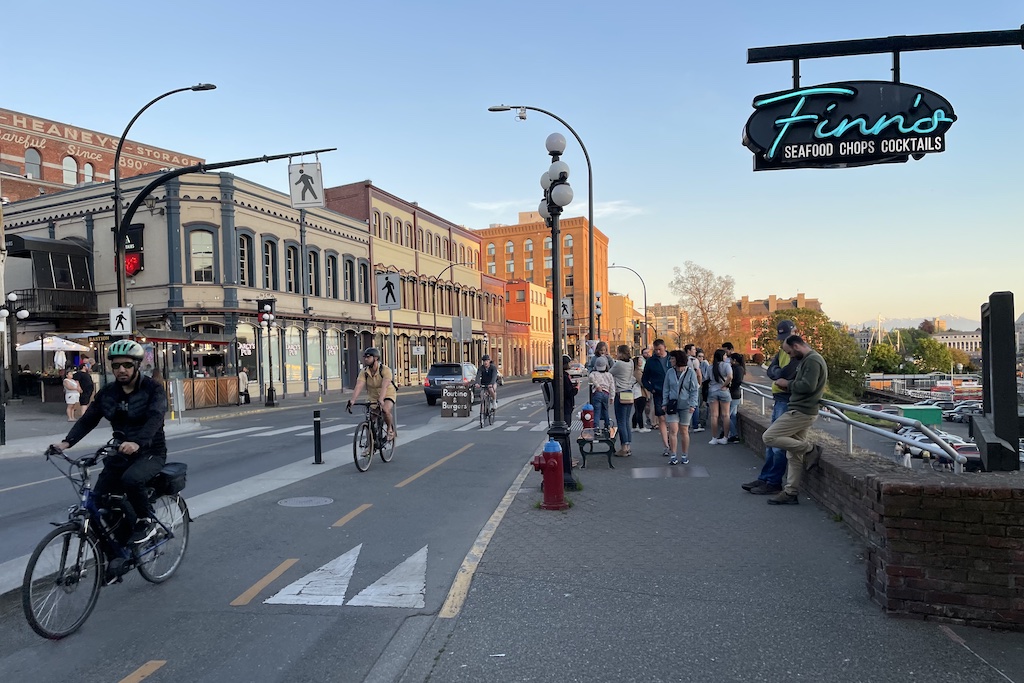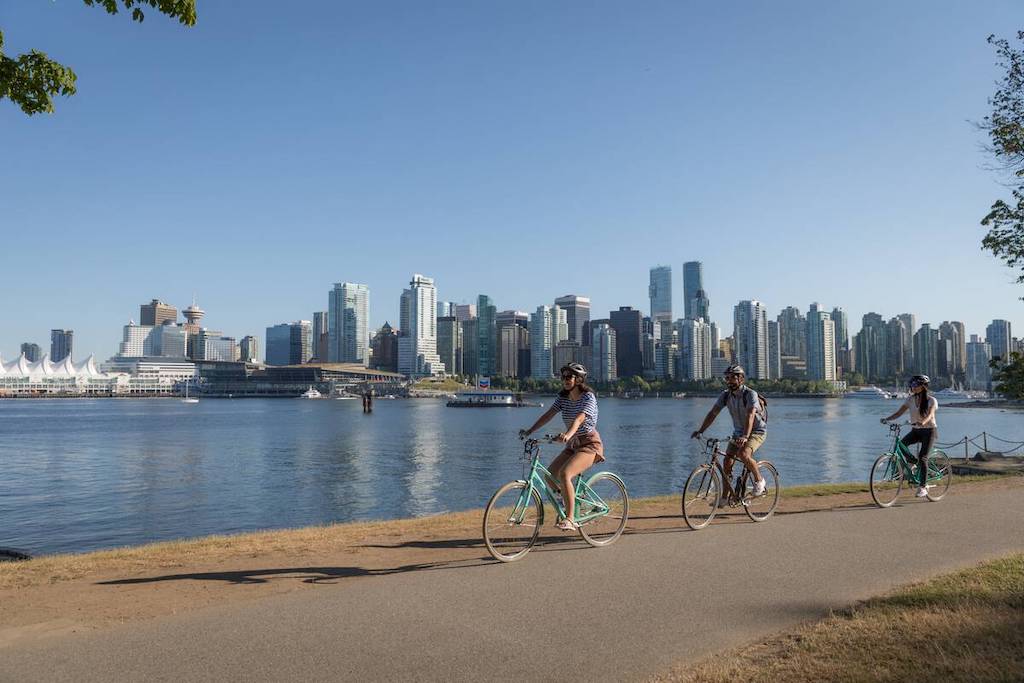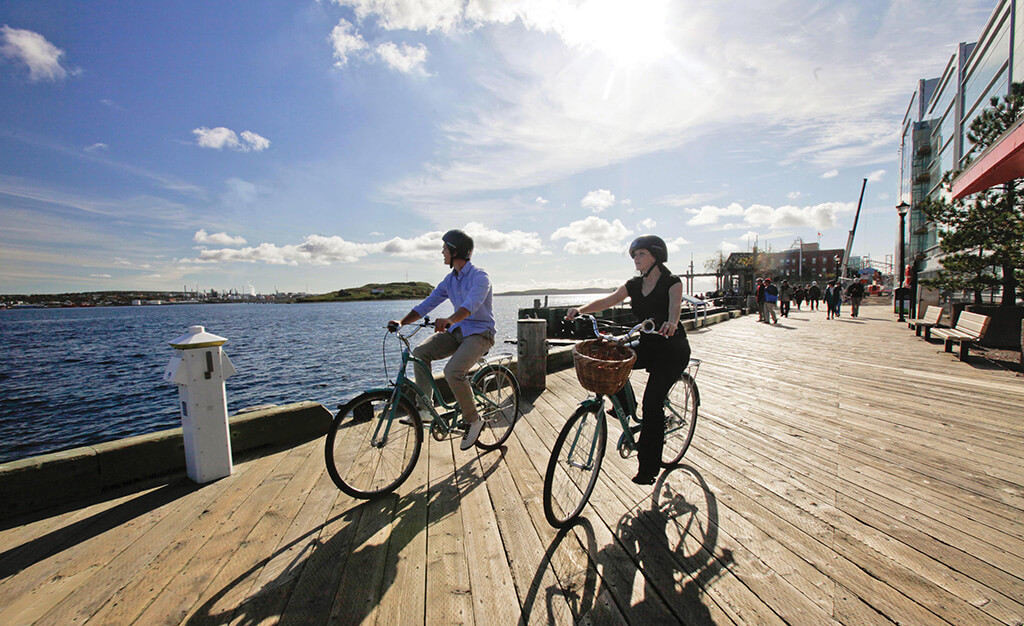Autumn Gear Guide
Find inspiration in our Gear Guide that will keep you out on your bike through wind or rain.
Download NowThere is a lot going down in the United States, very big, very bad things, not the least of which is a government that seems intent on shutting down and investment in green infrastructure and incentives. It’s going to be a challenging few years. A lot of wonderful bicyclists might be looking to relocate as […]
There is a lot going down in the United States, very big, very bad things, not the least of which is a government that seems intent on shutting down and investment in green infrastructure and incentives. It’s going to be a challenging few years.
A lot of wonderful bicyclists might be looking to relocate as a distinct possibility after recent political events that shall remain nameless. In fact, Google searches relating to moving to Canada have been up. To that end, we’ve prepared something of a bicyclist cheat sheet for those who consider a cycling friendly city at or near the top of the list of any potential relocation targets.
Canada has a number of pretty great bike-friendly large cities. From Vancouver’s laid-back west coast vibes to Montreal’s European charm, there’s a place for every kind of cyclist.
There are also some cities, like those in Ontario, that have a good deal of political upheaval of their own. For example, the Premier of Ontario, Doug Ford, has enacted legislation that will actually tear out three of Toronto’s separated cycleways including its oldest and busiest along Bloor Street. The car-loving provincial leader also wants to limit bike lane expansion throughout Ontario.
So, there is some good and some bad.
Without further ado, here’s your ultimate guide to Canada’s top bicycle friendly cities and what it’s like to relocate there—from infrastructure to lifestyle and everything in between.
American City Comparison: New Orleans, Louisiana – Rich in culture, language, and a distinct European vibe.
Montreal is one of the most iconic cycling cities in Canada—and for good reason. The city has recently taken its cycling infrastructure to the next level with the addition of the Express Vélo, a dedicated bicycle expressway designed to streamline commuting through the heart of the city. Along with more than 700 kilometers of bike lanes, Montreal offers riders a range of routes, from scenic canal-side paths to easy-going urban routes perfect for getting from point A to point B.
However, if you’re coming from the U.S., one thing to know is that French is the official language in Montreal. That means all signs are in French, but don’t worry—there are plenty of English-speaking areas, especially in neighborhoods such as the Plateau, Mile End, and Downtown. Many Montrealers speak both languages, so you’ll be able to get by just fine, but brushing up on basic French phrases will certainly help.
The city’s BIXI bike-share program is also a great way to get around, offering affordable rentals at docking stations throughout the city. If you’re into longer rides, the Route Verte, a network of incredible cycling routes across Quebec, is perfect for weekend getaways.
Living in Montreal is relatively affordable compared to cities like Vancouver or Toronto, with one-bedroom apartments in popular neighborhoods averaging between $1,200 and $1,800 per month. The median price for a single family home is $590,000CAD. If you’re moving to Montreal as an American, the Quebec Skilled Worker Program (QSWP) offers an immigration pathway, making it easier for skilled professionals to settle in this vibrant city.

Bike lane in Victoria, BC
American City Comparison: Portland, Oregon – Outdoorsy, rainy, and eco-friendly.
Victoria, located on Vancouver Island, is one of Canada’s best-kept cycling secrets. With its temperate climate, Victoria offers year-round cycling opportunities—though expect a lot of rain in the winter months! This laid-back, west coast city has a reputation for being both outdoorsy and relaxed, making it the perfect environment for cyclists who appreciate an active lifestyle.
Victoria’s Galloping Goose Trail is a highlight, stretching over 55 kilometers from the city to Sooke, offering cyclists a scenic ride through forests, along the coastline, and past rugged landscapes. The city has also invested in bike lanes and is progressively working on expanding its cycling network, not just downtown but in the surrounding suburbs and region, and is now impressively widespread.
The cost of living in Victoria can be high—expect to pay between $1,700 and $2,200 for a one-bedroom apartment in neighborhoods like James Bay or Fairfield. The average home price in September, 2024 was 950,000. However, the city’s relaxed pace of life, paired with its beautiful surroundings, makes it worth the cost for many. For those looking to settle in this smaller, tight-knit community, it’s easy to get involved in the local cycling culture, and as an American, Victoria offers pathways to immigration through British Columbia’s Provincial Nominee Program.
American City Comparison: Seattle, Washington – West coast, tech-driven, and bike-friendly.
Vancouver is the west coast cycling hub, offering both breathtaking views and a bustling urban environment. From the Stanley Park Seawall to scenic routes along the waterfront, cycling in Vancouver feels like an adventure every time you hop on your bike. With more than 450 kilometers of bike lanes, it’s clear that cycling is part of Vancouver’s DNA, despite its recent election of a mayor and municipal government that doesn’t seem to value urban bicycling as much as past governments.
Vancouver’s cycling infrastructure is well-established but needs to grow along with the city and further into the surrounding region, which is still a work in progress. Nonetheless, the existing bike lanes and cycling culture make Vancouver a popular destination for cyclists who thrive in a vibrant, outdoorsy atmosphere. The cycling community here is strong, with lots of cyclists on the roads and plenty of opportunities to get involved.
Vancouver is known for its high cost of living, with rents in central neighborhoods like Kitsilano or Mount Pleasantrunning anywhere from $2,000 to $2,800 for a one-bedroom apartment. The average home price in September, 2024 was near $1.2 million. If you’re looking to move to Vancouver from the U.S., the Express Entry System and BC Provincial Nominee Program are common pathways for skilled workers, though be prepared for steep housing costs.

Group cycling along the sea wall in Stanley Park
American City Comparison: Charleston, South Carolina – Coastal, historic, and full of charm.
Halifax is a rising star in the Canadian cycling scene. This smaller coastal city has an old-school charm and is known for its mix of historic sites and modern culture. Halifax is also investing heavily in its cycling infrastructure, with expanding bike lanes and a growing network of cycling-friendly streets. The Halifax Waterfront Trail is one of the best-known routes, offering stunning views of the harbor as you pedal through this picturesque city.
What makes Halifax particularly appealing for cyclists is the small-town vibe combined with the big-city amenities. The city is growing, but still manageable, and its coastal location provides plenty of outdoor recreation opportunities, including biking, hiking, and water activities. Winters in Halifax can be harsh, with plenty of snow, but the spring and summer months are picture perfect.
For Americans, Halifax is an affordable city to live especially when compared to places like Toronto or Vancouver. Rent prices are lower—usually between $1,200 and $1,800 for a one-bedroom apartment in neighborhoods like the North End and Downtown. Halifax has pathways for immigrants through the Nova Scotia Nominee Program (NSNP), making it easier for skilled workers to settle here and become part of the growing bike community.

Photo courtesy of Destination Halifax
American City Comparison: Pittsburgh, Pennsylvania – Affordable, revitalizing, and close to major cities.
Hamilton may not be as well-known as some of Canada’s bigger cities, but this up-and-coming city is rapidly transforming into a bicycle-friendly haven. Hamilton has a long way to go in terms of infrastructure, but with ambitious cycling projects already underway, it’s poised to become a major cycling destination in Ontario.
The city has recently invested in creating protected bike lanes and is working on connecting existing bike paths to make cycling in Hamilton more accessible and safe. The Hamilton-Brantford Rail Trail is a popular option, providing cyclists with scenic views along the way. Though Hamilton still has a long way to go before it matches cities like Toronto or Montreal, its potential is clear, and its affordability compared to larger urban centers is a big draw.
Looking to relocate? Hamilton’s cost of living is significantly lower than in nearby Toronto, making it an appealing option for those looking to escape the sky-high rents of Canada’s biggest cities. One-bedroom apartments typically cost between $1,100 and $1,500. And with its proximity to Toronto—just an hour’s drive away—Hamilton offers the perfect balance between affordability and urban convenience.
Canada is quickly becoming one of the best places for urban cyclists, with cities across the country ramping up efforts to make cycling more accessible, safe, and fun. Whether you’re drawn to Montreal’s robust bike expressways, Victoria’s scenic coastal paths, Vancouver’s outdoor lifestyle, or the emerging cycling culture in Halifax and Hamilton, there’s a perfect city for every bicyclist looking to relocate.
Find inspiration in our Gear Guide that will keep you out on your bike through wind or rain.
Download Now
Leave a comment